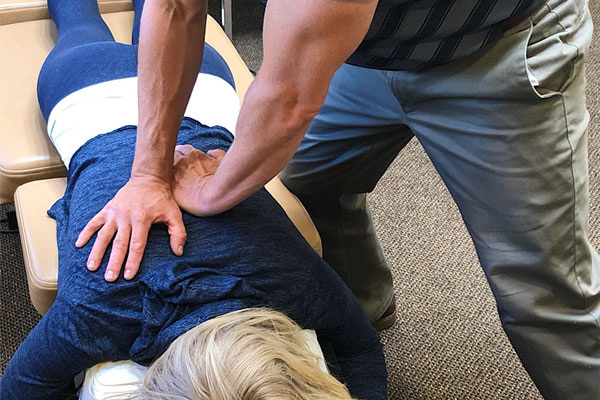Evidence-Based Benefits of Chiropractic Adjustments
The Science Behind the "Pop": Evidence-Based Benefits of Chiropractic Adjustments

Chiropractic care has come a long way in recent decades, moving beyond tradition into the realm of evidence-based practice. One technique, however, remains a foundational tool for musculoskeletal health: High-Velocity, Low-Amplitude (HVLA) spinal manipulation. While gentler techniques like flexion distraction and instrument-assisted methods have their place, HVLA adjustments continue to deliver unparalleled results in restoring movement, reducing pain, and enhancing overall function. But what makes this hands-on approach so effective?
To illustrate the power of HVLA, imagine a rusty door hinge that has become stiff and difficult to move. Over time, accumulated debris and lack of lubrication limit its function. A swift, controlled application of force can break up the stiffness and restore smooth movement. Similarly, HVLA spinal manipulation helps alleviate joint restriction, improve mobility, and reset neurological signaling to optimize musculoskeletal health.
1. Biomechanical Benefits: Restoring Movement and Reducing Restriction
Our joints, much like mechanical hinges, require proper movement and lubrication to function optimally. When spinal joints become restricted due to injury, poor posture, or chronic stress, they can lead to pain and stiffness. Research shows that HVLA adjustments provide:
- Restoration of joint mobility: The precise application of force helps reposition facet joints, breaking adhesions and reducing joint restriction (1).
- Reduction of intra-articular pressure: By promoting synovial fluid movement, HVLA adjustments enhance joint lubrication and minimize stiffness (2).
- Cavitation phenomenon: That audible "pop" heard during an adjustment is caused by gas bubble release within the synovial fluid, often leading to an immediate sense of relief (3).
2. Neurological Benefits: Resetting the Nervous System
If you’ve ever rebooted a frozen computer and watched it start working smoothly again, you’ve witnessed a reset in action. HVLA adjustments provide a similar neurological reset by:
- Modulating pain perception: The rapid mechanical stimulus from an adjustment activates mechanoreceptors, blocking pain signals through the Gate Control Theory (4).
- Encouraging reflexive muscle relaxation: Spinal manipulation influences muscle spindle and Golgi tendon organ activity, reducing muscle tension and spasms (5).
- Enhancing proprioception: By restoring joint function, HVLA adjustments improve the body's sense of spatial awareness, aiding coordination and balance.
3. Neurochemical & Inflammatory Modulation: The Natural Painkiller Effect
Your body has its own built-in pharmacy, releasing chemicals that help control pain and inflammation. Research has shown that HVLA spinal manipulation can:
- Trigger endorphin and enkephalin release: These natural opioids act as pain relievers and promote relaxation (6).
- Reduce pro-inflammatory cytokines: Studies indicate that HVLA adjustments lower levels of TNF-α and IL-6, two key markers of inflammation (7).
- Activate the Hypothalamic-Pituitary-Adrenal (HPA) axis: Spinal manipulation can stimulate cortisol release, which helps regulate inflammation and stress response (8).
4. Vascular & Cerebrospinal Fluid (CSF) Effects: Enhancing Circulation and Healing
Imagine a river that has become blocked by debris, restricting its flow. In a similar way, spinal restrictions can impair circulation and cerebrospinal fluid (CSF) movement. HVLA adjustments have been found to:
- Increase local blood flow and oxygenation: Enhancing circulation in spinal muscles and tissues promotes faster healing (9).
- Improve CSF circulation: Some studies suggest that spinal adjustments optimize CSF dynamics, which may help alleviate conditions like cervicogenic headaches (10).
5. Psychosocial Effects: The Mind-Body Connection
Pain is more than just a physical sensation; it has a psychological component that can impact a person's movement and quality of life. HVLA adjustments contribute to:
- Placebo and expectation effects: A patient’s confidence in chiropractic care enhances pain relief through psychological and neurobiological mechanisms (11).
- Reduction in fear-avoidance behavior: By improving movement and reducing pain, adjustments encourage patients to stay active, preventing chronic disability (12).
Conclusion: The Timeless Power of Spinal Manipulation
Just as a well-tuned engine performs better, the human body functions optimally when joint movement, nervous system activity, and circulation are all in balance. HVLA spinal manipulation remains a cornerstone of evidence-based chiropractic care, offering biomechanical, neurological, neurochemical, and vascular benefits. Whether you suffer from low back pain, neck stiffness, sciatica, or headaches, this technique provides a scientifically supported approach to improving musculoskeletal health.
Incorporating spinal manipulation into a comprehensive treatment plan—alongside exercise, nutrition, and lifestyle modifications—can maximize patient outcomes and promote long-term well-being. The next time you hear that satisfying “pop,” know that it's more than just a sound—it’s a reset for your body, backed by science.

References:
(1) Pickar JG. Neurophysiological effects of spinal manipulation. Spine J. 2002.
(2) Cramer GC et al. Increased intervertebral motion following spinal manipulation. J Manipulative Physiol Ther. 2010.
(3) Kawchuk GN et al. Real-time visualization of cavitation during spinal manipulation. PLoS ONE. 2015.
(4) Melzack R, Wall PD. Pain mechanisms: a new theory. Science. 1965.
(5) Dishman JD, Bulbulian R. Spinal reflex attenuation associated with spinal manipulation. Spine. 2000.
(6) Vernon H. The neurophysiological effects of spinal manipulation. J Manipulative Physiol Ther. 2001.
(7) Teodorczyk-Injeyan JA et al. Chiropractic manipulation reduces inflammatory cytokines. J Manipulative Physiol Ther. 2006.
(8) Plaza-Manzano G et al. Effect of spinal manipulation on cortisol levels. J Orthop Sports Phys Ther. 2014.
(9) Huggins TJ et al. Blood flow changes following spinal manipulation. Clin Biomech. 2013.
(10) Woodfield HC et al. Spinal manipulation and cerebrospinal fluid flow: A review. J Bodyw Mov Ther. 2017.
(11) Kong J et al. The placebo effect in pain relief. Pain. 2007.
(12) George SZ et al. Fear-avoidance beliefs and their role in pain. Clin J Pain. 2011.
Posted In:
Chiropractic
Aging Gracefully
